Flag color White House red, white and blue
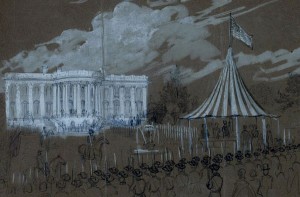
Voters are voting, candidates are campaigning, and reporters are recording. It’s the year of a presidential election, and a new chief executive will move into the White House next January. But one thing will remain consistent: American flags displayed inside and waving outside the most famous home in the nation.
The following stories, listed chronologically, derive from a two-volume work, “The President’s House,” by William Seale.
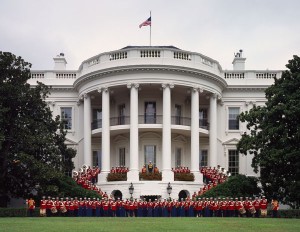
LINCOLN’S FLAG
After the assassination of Abraham Lincoln in April 1865, his wife, Mary, lingered in the White House, so the new chief executive, Andrew Johnson, temporarily worked in the Treasury Building.
To decorate the makeshift rooms, staffers brought in American flags, including ones that had hung from the Ford’s Theater box where the Great Emancipator was killed. “One bore a long rip made by [John Wilkes] Booth’s spur as the assassin leaped to the stage,” Seale noted.
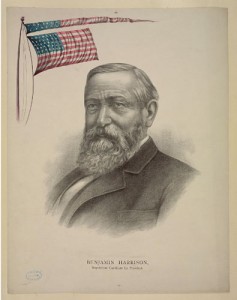
TOUCHES OF NORMALITY
After President Johnson won his impeachment trial, the White House resumed its normal celebrations, including dinners in the State Dining Room.
Martha Johnson Patterson, the president’s daughter, saw to it that her father’s home was spruced up and readied for parties. She had George Washington’s portrait cleaned and restored, sent furniture out to be repaired, and, according to Seale, “ordered four large American flags made of silk” to be set in the corners of dining room.
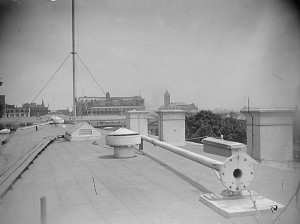
NEW FLAGPOLE
In the wake of the 1876 centennial of the Declaration of Independence, Seale recounted, President Benjamin Harrison was filled “with great affection for the United States flag” and “ordered all federal offices to display the flag daily.” He also saw to it that a new flagpole was put up on the Mansion’s roof.
Previously, President Rutherford B. Hayes had arranged for a flagstaff to be “put over the south portico.” But, after a windstorm damaged the pole, it was taken down. Harrison placed a new one on the roof, and a worker was charged with raising and lowering it.
Harrison’s love for the banner “extended to the East Room, which was decorated with presidential shields and American flags.”
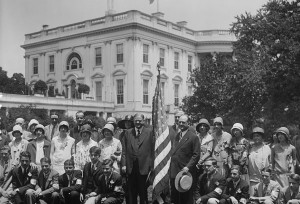
COSBY’S RAID
As Woodrow Wilson’s first inauguration neared in 1913, Col. Spencer Cosby hatched a plot. As the man in charge of public buildings in the District of Columbia, a job he was about to lose with the change of parties, he was in the right place at the right time to get a very special souvenir.
He assigned a White House staffer to go to the roof, wait till noon exactly and swap the flag waving there for another one. While everyone’s attention was on Wilson’s oath-taking, Cosby got his prize.
